 HubSpot connector
HubSpot connector
The Optimizely Digital Experience Platform contains many features to support you in your daily work. Depending on how your solution is set up, some features described in this documentation may not be available to you. Contact your system administrator to find out more. See Optimizely World for technical information.
The HubSpot connector add-on automatically exports form data from your website to your HubSpot account database by mapping Optimizely form fields to HubSpot database fields. For information about other database connector add-ons, see Marketing Automation.
Setting up Optimizely forms with HubSpot
The Forms Marketing Automation Integration (MAI Stands for "Marketing Automation Integration") connector lets you connect Optimizely form fields to a HubSpot database. See also Marketing Automation.
A developer must install the Forms Marketing Automation connector and the HubSpot connector. See Optimizely World for more information.
- In the Optimizely CMS admin view, select Config > Tool Settings > HubSpot. The HubSpot configuration settings screen appears.
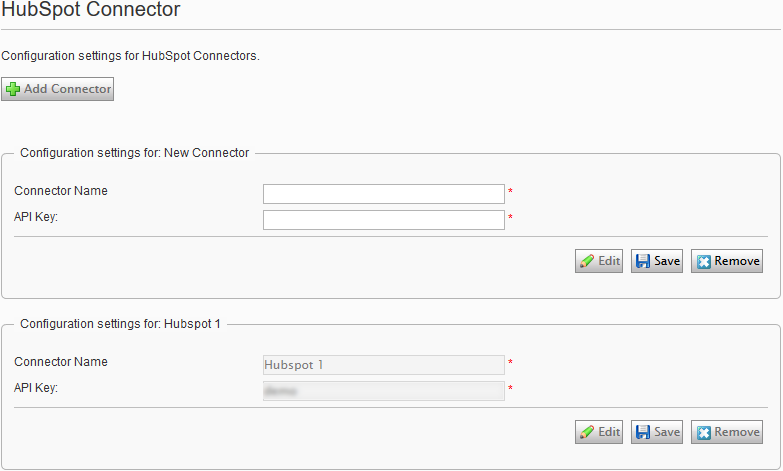
You can have multiple instances of the same connector. For example, if you have marketing teams in separate regions, you can have more than one HubSpot connector, such as HubSpot - Europe, HubSpot - US, and HubSpot - APAC. Click Add Connector to add another instance.
- Enter the HubSpot API key associated with your HubSpot account and click Save.
- Create a form on a page.
- Click All Properties on the form.
- Open the Mappings tab.
- Select the Contact database to which you map the form fields from the MA System Database drop-down field.
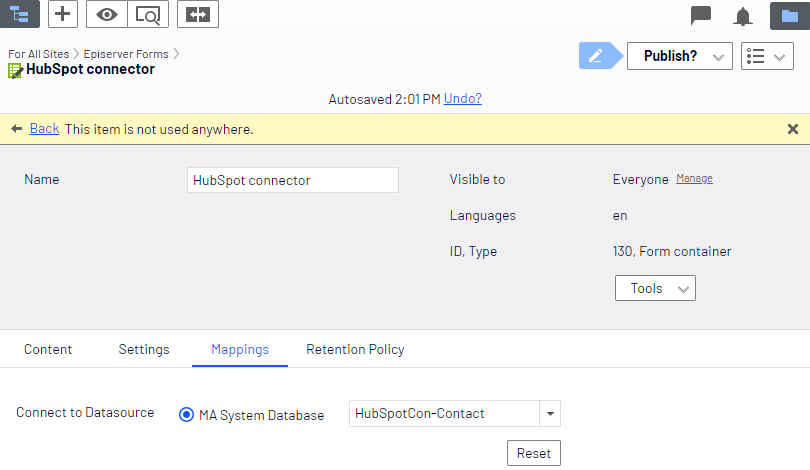
- Click Publish.
- On the form, select Edit from a form field's context menu.
- Open the Extra field mappings tab. The database option that you selected earlier appears.
- Enable the database option and open the associated drop-down list to see the fields it has available. For example, if your form has a Text field that was configured to capture an email address:
- Edit the email text field.
- Select the Extra field mappings tab.
- Select Email from the drop-down list to map the HubSpot database field to the Email field on the form.
You can type in the field to show fields that match the string you entered. In the following image, email was typed to show email, owneremail, and saleforceemail options (and not the other fields).
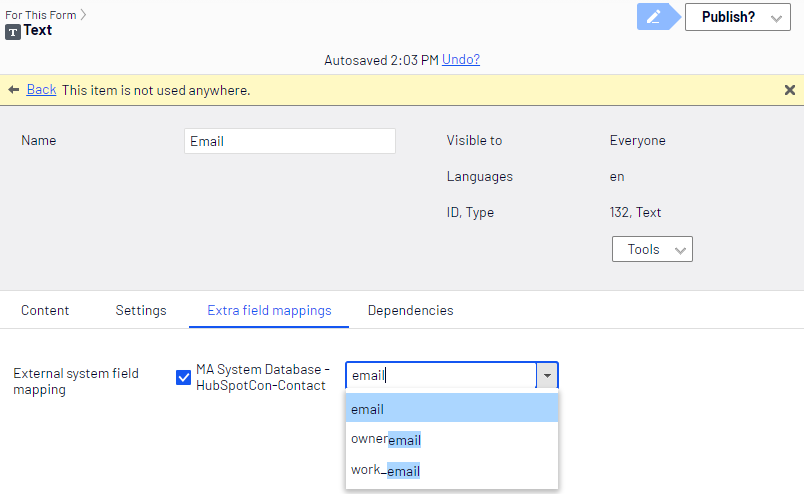
- Repeat steps 8 through 10 for as many fields that you want to map.
- Click Publish.
To test the mapping, go to your form on a published page, fill in and submit the form, then go to your HubSpot provider to verify that the user is added to the HubSpot database.
Retrieving contact data
When a visitor submits the form, the data is sent to HubSpot. To see who submitted the form, go to HubSpot > Email > Email to open the subscribers screen, and choose Subscribers > All Subscribers.
Personalizing the form using a block
You can personalize a form to show only to a selected group of people.
Video tutorial: Personalizing content with Optimizely and HubSpot. (2:34 minutes) See also Personalizing with visitor groups.
For more information about creating a visitor group and displaying information based on a visitor group, see Managing visitor groups.
- From the context menu on the form on the page, select Personalize. The Large content area dialog box appears.
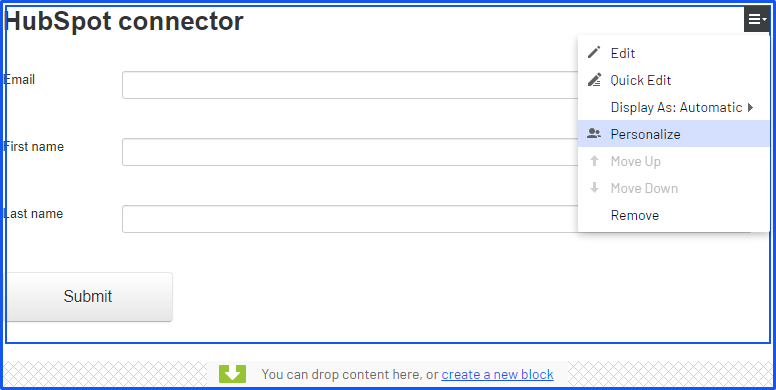
- Click Everyone and select a visitor group from the list. The following image shows personalizing the form to show only for people in the VIP visitor group.
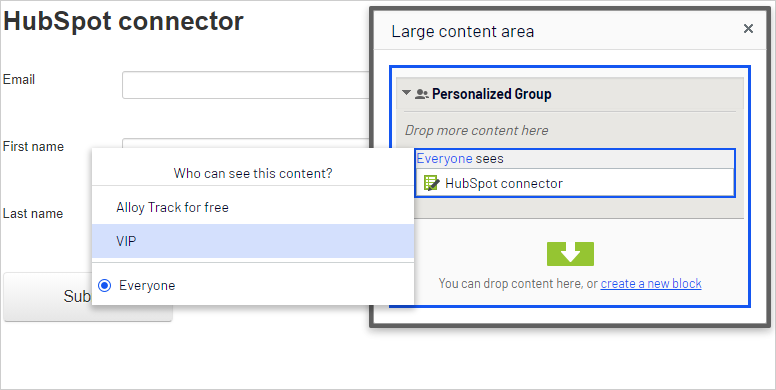
To create a visitor group for a HubSpot form, see Create a visitor group for an MAI connector form.